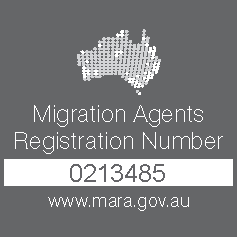Temporary Skilled Migration Income Threshold (TSMIT).
There’s a lot going on in the migration industry at the moment. The Jobs and Skills Summit saw an increase in skilled migration numbers announced, occupation lists have been up for discussion and in the last couple of weeks a review of Australia’s Migration Program was announced.
One topic that has also been up for quite a bit of discussion is the Temporary Skilled Migration Income Threshold (TSMIT). This has become a big topic of discussion for many involved. Currently the TSMIT is at $53,900 per year.
Everyone believes this is too low and it should be raised especially given that it hasn’t increased since 2013 and is now lower than the wages earned by 80% of Australia’s full-time workers. The ACTU want the TSMIT raised to $90,000 and the Australian Chamber of Commerce wants it raised to $60,000.
What should the Income Threshold number be?
The Grattan Institute suggests the income threshold should be $70,000, believing that this is where it would be if it had been indexed to wages over the last decade. They also feel that $60,000 is too low. Why? The income threshold needs to reflect that the Temporary Skilled Program is for skilled migrants. 
The freeze in the TSMIT has meant that more low-wage workers have come to Australia. They also worry a too-low threshold may lead to exploitation of lower-wage earning migrants as their research suggests those earning less than $70,000 on arrival are less likely to get future pay rises.
A $90,000 income threshold is considered too high in the Grattan Institute’s opinion. They reason that temporary skilled visa holders are often young, typically around 31 years of age and in the early stages of their career.
The median full-time wage for Australian workers aged 25 – 34 years being $72,774 per year. $90,000 is the average full-time earning of a person around 40 years of age and halfway through their career.
Setting the TSMIT at $90,000 may cut out many of the younger skilled workers who initially earn lower-than-average wages but as the backbone of Australia’s permanent migrant intake will earn much higher wages in the long term.
The other effects of a high TSMIT threshold
If the income threshold is set too high, it will cause other issues. It would lock out large numbers of skilled workers that Australia currently needs.
A threshold this high would have excluded about 60% of recent Temporary Skill Shortage (TSS) visas granted as well as up to half of all healthcare workers on TSS visas and one-third of education workers.
This would also have excluded up to 89% of nurses currently working in Australia on temporary sponsorship. In comparison, a $70,000 threshold would only lock out about 35% of all TSS visa holders and 20% of sponsored workers in healthcare.
Taking all these points into account, The Grattan Institute believes $70,000 is the Goldilocks Threshold, i.e. it’s just right. They base this on four reasons:
- It would strengthen the integrity of the temporary skill migration program by making sure the program is only available to skilled workers
- It would lower the risk of exploitation by preventing businesses from hiring vulnerable migrants with less bargaining power
- It would ensure Australia continues to attract younger, skilled workers to Australia via temporary sponsorship who may in the future become high-earning permanent migrants in the future
- By allowing sponsorship of only of higher-wage workers, Australia would be abl to simplify sponsorship rules for employers and migrants, making sponsorship more attractive.
While all these opinions and arguments relating the TSMIT are important, it’s also important to consider what level of relevance the TSMIT has. Regardless of what figure the TSMIT threshold sits at, the market salary of an Australian doing the same job in the same location with the same experience needs to be demonstrated thus potentially rendering the TSMIT irrelevant in certain instances.







